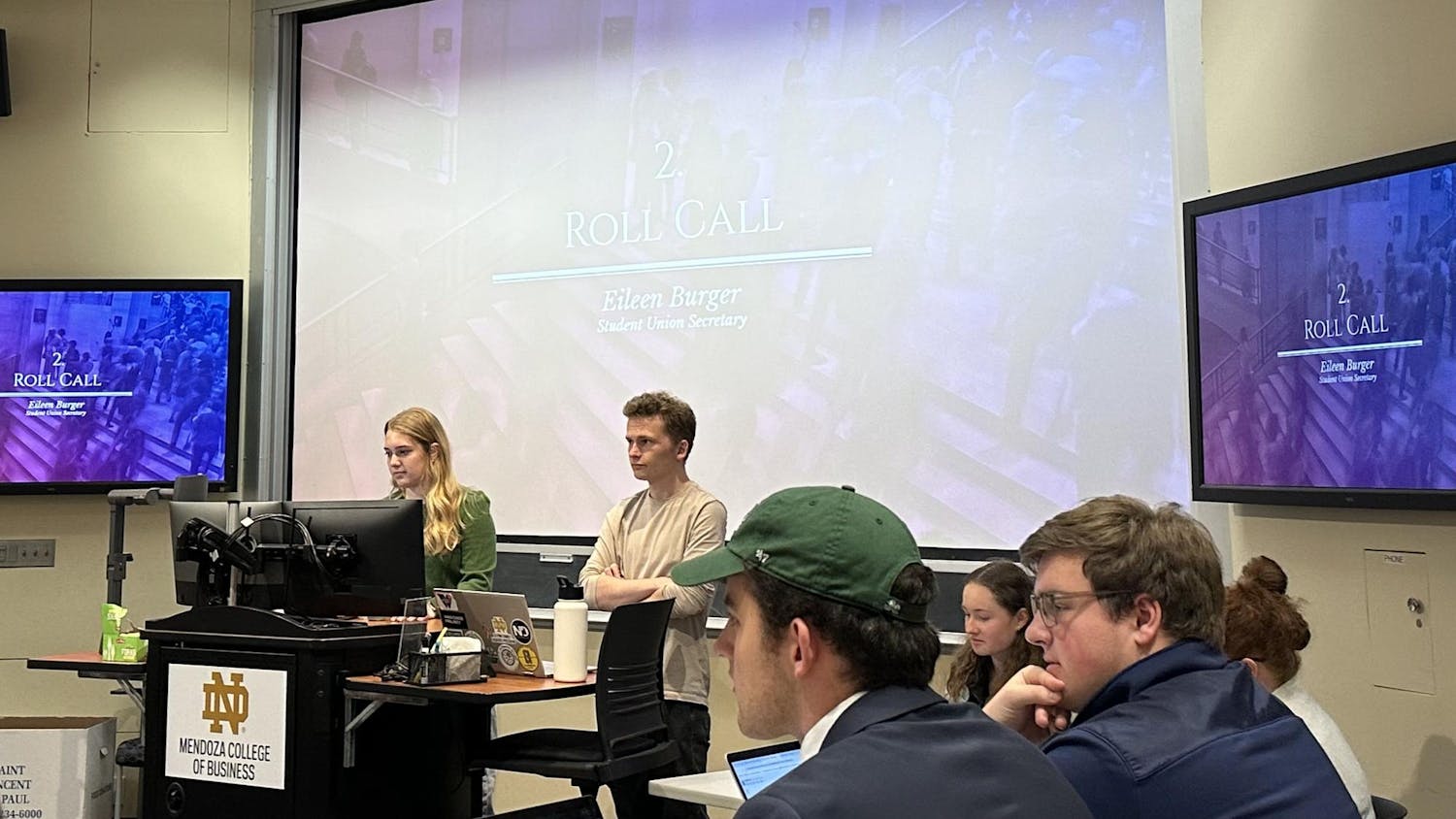For many Notre Dame students, the concept of homelessness in America may only represent a social problem far removed from their lives, but senior Emily Salvaterra said she confronts the reality of the issue on a weekly basis.

As students in Professor Benedict Giamo's American Studies course, titled "Confronting Homelessness in the U.S.," Salvaterra and her peers commit at least three hours per week to volunteering at the Center for the Homeless in South Bend.
"The whole idea of this class is to bring a national social issue into a local perspective," Salvaterra said. "The experiential learning component is really important to understanding homelessness, and you don't get the chance to do things like this in every class."
The course, which Giamo has taught since his arrival at Notre Dame in 1990, examines the conditions of extreme poverty and homelessness within the context of American culture and society. It studies the issue from historical, sociological and economic perspectives.

However, Giamo said the experiential learning aspect of the course is crucial to students' grasp of homelessness as a real issue.
"I think it's very important for students to account for homelessness as an academic area and as a real, living presence in contemporary society," Giamo said. "Homelessness is still very much a social problem, and it has not been ameliorated."
Students sharpen their skills in integrating theory and practice by writing journal entries about each volunteer experience at the Center for the Homeless.
They take on various service roles in their work at the Center, including tutoring, overseeing children's activities, working at the front desk or in the kitchen and participating in after-school programs for children. In general, Giamo said he encourages his students to interact with homelessness as much as possible.
"I want students to encounter and put a face on homelessness," Giamo said. "The more students interact with the homeless, the more they will be able to understand individual stories of homelessness."
Salvaterra said she brought her previous experience as a summer intern at the Center for the Homeless into her academic and practical understanding of the issue during the course.
"I've always been interested in issues of homelessness, so I went out of my way to take the class because I wanted to connect my academic pursuits with volunteering," Salvaterra said. "Literally confronting homelessness at the shelter causes you to confront your own biases and learn about people in ways that you can't in a regular class."
Academically, the course covers the issue of homelessness from the late 19th-century to the present day, highlighting the social and economic changes that contributed to shifts in patterns of homelessness in the U.S., Giamo said.
He said he wanted to give his students a sense of the history of homelessness by studying the issue from its initial identification as a social problem. For this reason, the first half of the course focuses on poverty and homelessness in New York City and other urban areas from the turn of the century to the 1970s.
"The social and economic forces of the Civil War helped create conditions of urban poverty after the war," Giamo said. "At the end of the century, social investigators encountered the poor and homeless in slums and tenements, and they wrote about it for a middle-class American audience."
Giamo said he covers homelessness from 1980 to the present in the second half of the course.
According to Giamo, the importance and effectiveness of the experiential learning aspect of the course comes through in students' documentary accounts of their experiences, which "forces them to integrate the objective, ethnographic dimension of the experience with the subjective dimension — their own feelings and impressions about homelessness."
Giamo said students who have experience with the issue from their time studying abroad in London and Dublin now have intercultural ideas about homelessness.
"It's interesting because homelessness is a global problem in advanced industrial countries," Giamo said. "Local microanalysis is at the center of this course, but we are aware that homelessness is a national and global phenomenon."












